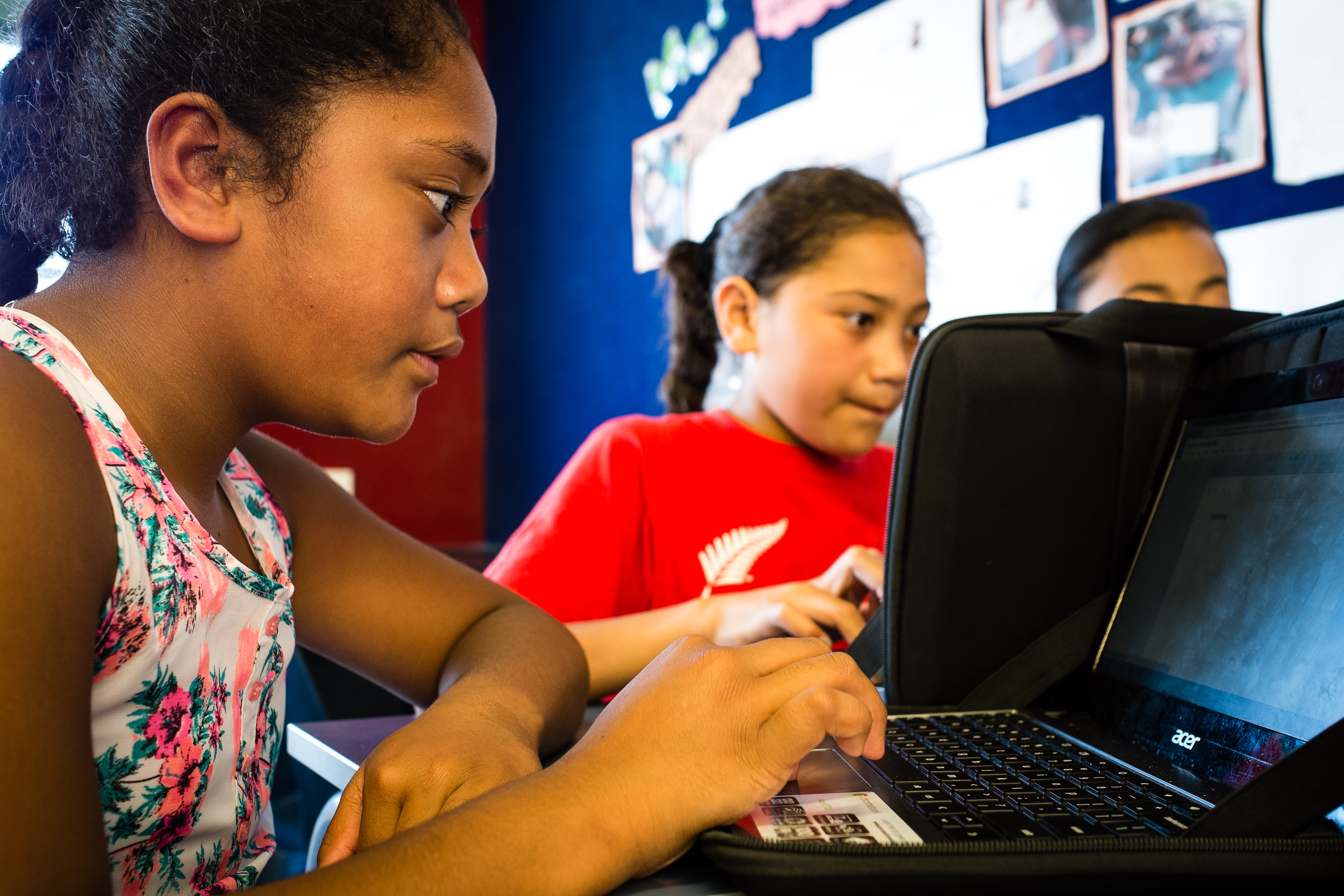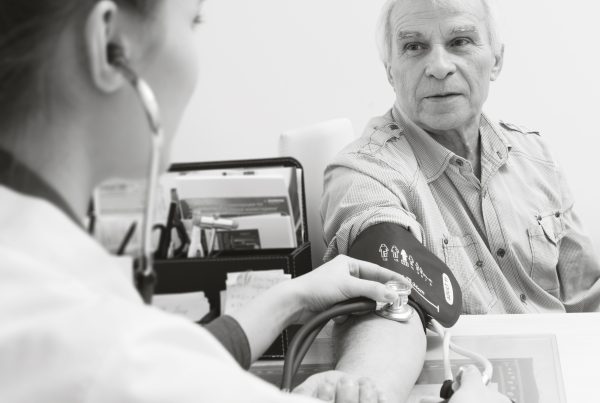
This is how Michele Whiting, the headteacher of decile 1 Corinna School in Porirua East, describes the early effects of the digital learning scheme that’s starting to transform the lives of the area’s students. At the core of the scheme is a Chromebook — a simple, affordable laptop — for every student, paid for by their parents in instalments over three years. But Whiting’s ambitions for the scheme go far beyond giving kids a lump of silicon: she wants to change the whole way her students learn and her teachers teach.
Whiting’s inspiration is the much-touted Manaiakalani scheme that has operated in a cluster of South Auckland’s poorest schools since 2012, and is credited with lifting student achievement significantly. In its first year within the programme, one school, Tamaki College, doubled its NCEA Level 2 results for Māori and Pasifika students — putting it among the 60 fastest-improving schools in the country.
By giving students a laptop, the Manaiakalani schools believe they can open up new worlds of learning. Children become at home in a digital world, able to learn anywhere, anytime and at any pace. Rather than just giving their homework to their teacher, they can upload it to websites visible to their whole community, allowing an exceptionally rich range of feedback. Teachers respond to this new world of learning by changing how they teach, encouraging collaboration and giving their students more control over what they learn and when. And the Manaiakalani scheme places a huge emphasis on working with parents — many of whom have little experience of digital technology — so that the programme is increasing their skills and making them more confident too.
It’s an ambitious scheme — but it has to be if low-decile schools are to bridge the digital divide and catch up to the offerings of decile 10 schools. Wellington’s Scots College, for instance, now requires every student in Years 6–13 to bring their own wi-fi-enabled device to school. It also introduces them to modern robotics equipment and coding clubs from an early age. “How empowering is it for young people to have access to this level of equipment, facilities and teaching?” Scots’ ICT director Cornel Fuhri asks rhetorically. “The sky is the limit for them.”

The idea started when Whiting heard Pat Snedden, the chair of the Manaiakalani programme, speak at a Porirua education summit in 2013. She got Snedden to meet with her and other headteachers in the area. He then introduced her to Antony Royal, a member of Ngā Pū Waea, a working group set up in 2011 to ensure that Māori interests are advanced in the roll-out of ultra-fast broadband and the rural broadband initiative.
Royal, who is also involved in an e‑schools initiative in Otaki, says he took a group of students up to watch the Manaiakalani model in action. “And there was some degree of, ‘Why’s Antony dragging us all the way to Auckland, just to see some computers in classrooms?’ But then they came back really excited.” By what? “By the potential for greater engagement… What they saw was confident kids, being able to stand up in front of adults and articulate and discuss their learning experiences.”
Soon after Whiting and Royal met, discussions about copying the Manaiakalani model began in earnest among the 12 schools — almost all of them decile 1 — that make up the Porirua East cluster; and it was at this point, Whiting says, that “everybody started to get very nervous… There was an ‘Oh my goodness, we aren’t ready’ feeling.” Some locals were, in fact, strongly opposed. Whiting rolls her eyes as she recalls one school board member saying to her: “We’ll teach them [the kids] to read and write before we give them the toys.” In the end, a small group of the keenest schools pushed on with the plan. Within six months, Royal had set up a trust to run the scheme. The Manaiakalani team helped out, sending an administrator down to advise on systems design. “But actually it [the support] was very light,” Whiting says. “We had to do it, and do it the best way we could.”
Some mistakes were made along the way, she admits. The first lot of Chromebooks were leased to three school classes that were “very keen” to get onto the new scheme. As a result, Whiting says, “We allowed the Chromebooks to go home straight away, before really making sure the kids understood, and the parents understood, the responsibility to look after them. So we had a few broken screens in the first six weeks.”
That came with a cost, of course. The way the scheme works is that each Chromebook is paid off at $4 a week over three years. That adds up to a bit over $600, covering the cost of the laptop itself, a three-year insurance policy, a Google management console, and interest for the company providing the finance. So families stump up for most of the costs themselves. But the trust takes on the liability for things going wrong, including damages, warranty and insurance issues — and parents being unable to pay. For middle-class families, a couple of gold coins a week would be no big deal, but Porirua East has some of the country’s poorest households, many of them reliant on benefits that pay, for instance, around $340 a week for an unemployed couple.
Even once accommodation supplement and other state support is taken into account, some families have precious little left over to spend on anything. So the fact that the trust takes on the credit risk is “a safety thing for parents,” Whiting says. The Manaiakalani scheme has a 20 percent non-payment rate, and the Porirua team expect a similar figure, “though actually it has been less than that for us [so far]”. Other, more permanent losses are also inevitable. “I know there are some where kids have gone [from the area] and taken the Chromebooks, and it’s goodbye for ever. So managing it is still a work in progress.”
The scheme r
Happily for her and for the students, results are already beginning to flow. “The kids start to see the purpose of the learning, what they are working on and what they need to do better. They are getting feedback from their peers and from teachers. They are getting a much more intimate relationship with that stuff.” In terms of the hard data, a couple of classes have made “significant improvements” in writing, especially spelling, and one group of boys has seen big gains in reading, “because they were reading more non-fiction online, then finding books in the library that supported that”. But, Whiting adds, “it’s also [about] the relationship between teacher and child. Just giving them the Chromebook doesn’t necessarily help. It’s how it is used by the teacher.”
That means teachers are having “to let go a little bit of the control part of learning. They have to allow the kids a lot more power around choosing what they are going to learn and what they do next.” To begin
blogging, “the purpose around that and who it goes out to and why.”
Funding the scheme is not straightforward, either; although parents cover the cost of the Chromebooks, there are still all the other costs of running the scheme. The Manaiakalani trust has put in $10,000, and funding from charities is paying for an administrator and a whānau engagement worker to help parents get up to speed with the technology. For the schools involved, Whiting says, “It’s quite a scary time, really, because they [parents] are only paying $4 a week, so the amount that comes in is fairly small.”
In the long term, Royal adds, funding is “ultimately the responsibility of the Ministry of Education, if they can get their heads around this… Until that happens, we do have some funding for a period of time to work on this project. We need to spend some more time thinking about how we make this more sustainable.” One option, he says, is to build a commercial model alongside the scheme to provide some income.
That opportunity comes up when the team confronts one of its biggest challenges: the fact that around one-third of households in the area lack an Internet connection. Royal says this “isn’t necessarily an affordability issue. It’s a combination of affordability and prioritisation, what you spend money on.” Part of the programme’s aim is to help parents see the value of having Internet access at home for their kids, and he thinks most families “will rise Internet connectivity higher up their priorities” once they understand what the scheme can deliver.
Nonetheless, Royal is wor
Royal admits it’s hard work getting the e‑schools scheme going. “Is this easy to do? No. If it was easy to do, everybody would be doing it.” But, he says, it opens up so many possibilities. “Some people perceive that being in Porirua East would be a disadvantage. I would like in the future that people come here because they know [kids] are getting a good education. And that businesses will come here because they will find a pool of talent here that has been untapped.”
Whiting, for her part, says the initiative is having all sorts of positive spin-offs, such as breaking down barriers between schools — “we’re taking the fences away”. For the students, the scheme offers them “the opportunity to actually achieve skills they need to get through the qualifications”. And, ultimately, the chance to lift their sights higher. “Suddenly,” she says, “there is a whole new set of possibilities that they didn’t think about before.”




